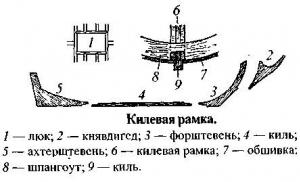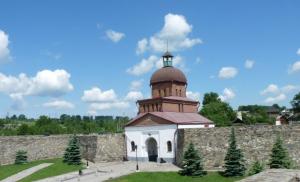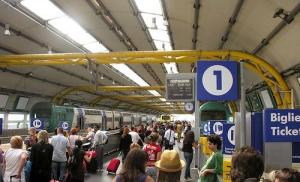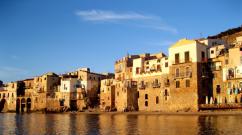Architecture of the historical and modern city. Architecture of the historical city: description and history
Architecture modern city It is distinguished by its diversity and rapidity, developing along with technical progress. From the buildings built in a certain era, one can observe different styles, values and aspirations of people to satisfy their own needs.
History of urban development, order system
The ancient cities of Greece and the Roman Empire are still considered masterpieces of a distant era, a hymn to the beauty and greatness of the creative person. Famous buildings and monuments of ancient architecture are the property of world culture and the heritage of progressive humanity. According to historians and art critics, without the foundation laid in those ancient times, modern Europe could not exist.
Therefore, the architecture connection is obvious historical city with the architecture of a modern city, because the planning of the territory of a settlement and the construction of buildings in it, called urban planning, has been carried out since ancient times. However, these principles were very different for different eras and countries.
IN Ancient Greece the political, religious and cultural center of the settlement was temple complex, and streets laid out on a rectangular grid departed from it. Ancient temples in Greece began to be built according to the rules of the order system, which subsequently had a great influence on the entire history of world architecture.
In those days, certain rules were founded and established for the relationship between the structural parts of buildings and their decorative design, which later received the name of the order. The design and composition of the temples were based on columns and beams, which had a set shape and relative position.
The classical order system (Doric, Ionic, Corinthian), which has undergone evolutionary changes over many centuries, played a huge role in the formation and development of European architecture. However, in the construction of modern public buildings, it is most often used by architects only as stylization or decorative elements.
Therefore, the ancient Greek order system in the architecture of modern cities has been preserved mainly in historical monuments and the development of old areas.
Urban planning: eras and countries
The medieval city was characterized by the presence of a fortress surrounded by a high stone wall and a moat with water, which served as a defensive function for the residents living in it. Later European cities were built around the building of the main cathedral, next to which the town hall and market square were usually located. The street was laid from the gates of the fortress to the center.
Cities in the East were designed similarly: in the central part there was a mosque and minarets, nearby there was a madrasah (religious school), a ruler's palace and a caravanserai, with roads and residential areas diverging from them.
One of the branches of modernism was the style of brutalism, which appeared in the 1950-1970s, as well as neo-brutalism (the term comes from the French béton brut - “raw concrete”). Its creators, Alison and Peter Smithson, were inspired by the flexibility of reinforced concrete structures.
A representative of Art Nouveau mixed with avant-garde (such an extraordinary style is sometimes called biomorphic) was the German-born architect Fr. Hundertwasser (1928-2000). Houses built according to his designs are distinguished by their uniqueness and originality, both in shape and color saturation.

Art Deco, organic architecture
Art Deco is a movement in art and architecture that appeared in the 1920s in Paris. Its distinctive features: the use of strict patterns, ethnic geometric patterns, and expensive materials in the interior.
The founder of the organic architecture style, F. L. Wright (1807-1956), applied the principles of harmonious placement of objects in the surrounding space and landscape when developing and constructing buildings. At the same time, only environmentally friendly materials were used to build the house: wood, natural stone, and reinforced concrete. An example of a house made in this style is the “House over the Waterfall”, which since 1966 has been considered a National historical monument USA.
At the beginning of the 21st century. There was a surge of interest in this style in architecture, which gave impetus to the emergence of the bio-tech style, which promotes the construction of buildings by analogy with natural organic forms.
Functionalism and rationalism
Functionalism is an architectural movement that emerged in the Netherlands and Germany in the mid-20th century, which adheres to the principles of suitability of a building for the purpose or process for which it was built. It is based on advances in construction technology and new techniques that make it possible to quickly build standard apartments in sections from precast reinforced concrete.

It is in the style of functionalism that high-rise office and residential buildings that make up the silhouette of a modern city are erected. The architecture of buildings in this direction has the following main features:
- the use of right angles and shapes, large planes;
- the materials used were monolithic and prefabricated sections of reinforced concrete, glass, and occasionally brick;
- flat roofs;
- Multi-storey and industrial buildings are characterized by a horizontal strip arrangement of façade glazing;
- the lower floors have wider space and are used for shops and other public establishments.
Rationalism is an avant-garde style in architecture and art that emerged during the Soviet period in the 1930s. Buildings built in this direction are characterized by laconic, strict and rational forms. In terms of content, the style is close to constructivism.

Garden City Concept
One of the urban planning concepts arose at the beginning of the 20th century, after the publication of E. Howard’s book “Garden Cities”, in which the author proposed completely new ideas and schemes for the construction of cities. Plans and original architectural features were proposed for a modern city located on communal lands. The purpose of the settlement was to create good social and living conditions for low-income groups of the population within suburban settlements on the outskirts of megacities.

Masterpieces of modern architecture
Over the past decades, many architects have built many interesting and original architectural objects. The modern city is a miracle of engineering. For maximum expressiveness of the artistic image, architects successfully use in the project the principles of harmonious combination with the surrounding space, asymmetry, contrasting opposition of different planes, etc.
All modern buildings are, as a rule, skyscrapers or high-rise buildings, which are being built in the USA, UAE, India, Singapore, etc. During their construction, advanced scientific and technical developments, a variety of construction and finishing materials, original texture and color options are used . Some were created by world-famous architects, others by talented young architects.

Cities with modern architecture
You can find interesting and original cities all over the world, and it is quite difficult to say which of them are the best. The 21st is the century of globalization in architecture, art and other areas, in which the differences between Western and Eastern styles are being erased, megacities are stretching upward, and buildings in them compete not only in height, but also in originality and pretentiousness.
Listed below are some best cities with modern architecture:
- Chicago is one of the first high-rise metropolises; the first multi-storey buildings were built here back in the 19th century. Many interesting vertical buildings were made according to the designs of L. Sullivan; later F. L. Wright, Ludwig Mies van der Rohe and others worked here. The city is considered an example of modernism in the field of architecture.
- Beijing, Ho Chi Minh City, Shanghai and other Asian cities are a mix of colonial-style buildings and modern skyscrapers that have risen to the skies over the past 20 years.
- Tokyo - was practically revived from the ruins after the Second World War, its architectural feature became the construction of high-rise buildings taking into account advanced technologies and innovations.
- Dubai is rapidly soaring upward and at the same time conquering the sea, as many skyscrapers are built on artificial made islands. Most of the projects look futuristic and fantastic, the most famous of them is the Burj Khalifa tower, 828 m high, built by US architect E. Smith.

The architecture of modern cities is an art and science, characterized by a mixture of styles and a violation of classical traditions and stereotypes. Many of the extraordinary buildings erected by their mere appearance can cause a storm of positive emotions, causing admiration, and at the same time shocking with their originality and unusualness.
Architecture of historical cities Test work.
Art. 9th grade

1.Architecture (lat. Architectura) – art………. and build buildings, ……, organizing the spatial environment, the art of shaping this environment for ….. and ……… people, giving …….. pleasure. Fill in the missing words.

2.What does the word mean? “city” and why our ancestors “fenced” it.


4.Every medieval city had mandatory protective structures. Name at least 4 - 5 such structures.

Medieval Western Europe
5. Which building was always located in the center of the medieval city? Why?

6.What was it like? eastern city? What did it look like and how was it different from the Western one in the Middle Ages?

Eastern medieval city
7.What is the name of the building in the photo. Give its description.

Cities of medieval Rus'
Modern aerial photography
8. N Name the city and describe its layout.

9. Cities of medieval Rus'
4…….
2………………
1………
5……….
9. Label the names on the city map.

Saint Petersburg
Moscow
10. How are these city planning schemes different?

Where did Moscow begin?
11.Describe the Moscow Kremlin under Ivan Kalita.

Where did Moscow begin?
12.What has changed in the Kremlin under Dmitry Donskoy?

Where did Moscow begin?
13.How Ivan the Third decorated and expanded the capital.


14.Name from 5 to 10 objects of modern Moscow known to you.
- 1……………
- 2……………
- 3……………
- 4……………
- 5……………
- 6……………
Slide 1
Architecture of the historical city

Slide 2
Map of Moscow in the 16th century
Architecture (lat. architectura) is the art of designing and constructing buildings, structures that organize the spatial environment, the art of shaping this environment for people’s life and activities, delivering aesthetic pleasure.
One of the most useful arts for human life is architecture.

Slide 3
F. Schelling called architecture “frozen music”; “a resounding melody” - I.-V. Goethe. Many composers were keen connoisseurs of architecture. Since ancient times, man has learned to build a home for himself. For this purpose, natural materials were used, which were rich in the surrounding area. Large quantity houses formed settlements. For defense against enemies, settlements were surrounded by walls, fenced with a fence or palisade, wattle fence or wooden wall. Therefore, the Russian word “city” originally meant “fortification” and came from the expressions “to enclose”, “to enclose with a fence”, “to fence around”.

Slide 4
The planning and construction of cities is one of the areas of architecture, it is called “urban planning”. The layout of cities in Antiquity, the Middle Ages, the Renaissance, and ancient Russian cities differed in many ways. In Antiquity, a temple complex was built on a fortified hill. An example is the Acropolis of Athens - political, religious, cultural center cities. It was a landmark among the rectangular grid of streets below.
Acrocorinth. Greece
Athens Acropolis. Greece

Slide 5
Each medieval city was fenced with mighty stone walls with battlements and towers, surrounded by a deep ditch, making it a powerful, reliable fortress. The fortified city had defensive significance; capturing its gates meant capturing the entire city. The center of the Western European city was cathedral. The administrative building of the town hall and the market square were located nearby.
The square and building of the city hall. Prague

Slide 6
in Medieval Rus', the city usually grew on an elevated place. The central place in its composition and silhouette was occupied by the detinets (from the 14th century - the Kremlin). It was the inner core of the city’s fortifications; people went under its protection after the fall of the outer defense belt. The largest, monumental buildings were concentrated in the Kremlin - the cathedral and the palace. A typical example is the plan of ancient Moscow.
Novgorod child. Modern aerial photography

Slide 7
The economic and strategic center of the eastern medieval city was the square on which a madrasah was built - a higher school that trained clergy, teachers, etc.
Registan. Samarkand. Uzbekistan

Slide 8
During the Renaissance, architects again turned to the ancient tradition of town planning: at the end of wide straight streets, some kind of building was necessarily located. architectural ensemble, defining the majesty of the perspective. St. Petersburg was built on the same principle. It was built according to a plan drawn up in advance and carefully verified by Peter I. The streets and avenues in the central part of the city converge like a trident to the squares.
Map of St. Petersburg at the beginning of the 20th century.
Saint Petersburg. Historical center

Slide 9
Homework:
Find poems about the two capitals of Russia - Moscow and St. Petersburg, dedicated to the architectural sights of these cities. Read them to your classmates. How do you understand the meaning of the expressions: “Architecture is frozen music” and “Architecture is a faded melody”? What do music and architecture have in common?
Slide 1
Slide 2
 Map of Moscow of the 16th century Architecture (lat. architectura) is the art of designing and constructing buildings, structures that organize the spatial environment, the art of shaping this environment for people’s life and activities, delivering aesthetic pleasure. One of the most useful arts for human life is architecture.
Map of Moscow of the 16th century Architecture (lat. architectura) is the art of designing and constructing buildings, structures that organize the spatial environment, the art of shaping this environment for people’s life and activities, delivering aesthetic pleasure. One of the most useful arts for human life is architecture.
Slide 3
 F. Schelling called architecture “frozen music”; “resounding melody” - I.-V. Goethe. Many composers were keen connoisseurs of architecture. Since ancient times, man has learned to build a home for himself. For this purpose, natural materials were used, which were rich in the surrounding area. A large number of houses formed settlements. For defense against enemies, settlements were surrounded by walls, fenced with a fence or palisade, wattle fence or wooden wall. Therefore, the Russian word “city” originally meant “fortification” and came from the expressions “to enclose”, “to enclose with a fence”, “to fence around”.
F. Schelling called architecture “frozen music”; “resounding melody” - I.-V. Goethe. Many composers were keen connoisseurs of architecture. Since ancient times, man has learned to build a home for himself. For this purpose, natural materials were used, which were rich in the surrounding area. A large number of houses formed settlements. For defense against enemies, settlements were surrounded by walls, fenced with a fence or palisade, wattle fence or wooden wall. Therefore, the Russian word “city” originally meant “fortification” and came from the expressions “to enclose”, “to enclose with a fence”, “to fence around”.
Slide 4
 The planning and construction of cities is one of the areas of architecture, it is called “urban planning”. The layout of cities in Antiquity, the Middle Ages, the Renaissance, and ancient Russian cities differed in many ways. In Antiquity, a temple complex was built on a fortified hill. An example is the Athens Acropolis - the political, religious, cultural center of the city. It was a landmark among the rectangular grid of streets below. Acrocorinth. Greece Acropolis of Athens. Greece
The planning and construction of cities is one of the areas of architecture, it is called “urban planning”. The layout of cities in Antiquity, the Middle Ages, the Renaissance, and ancient Russian cities differed in many ways. In Antiquity, a temple complex was built on a fortified hill. An example is the Athens Acropolis - the political, religious, cultural center of the city. It was a landmark among the rectangular grid of streets below. Acrocorinth. Greece Acropolis of Athens. Greece
Slide 5
 Each medieval city was fenced with mighty stone walls with battlements and towers, surrounded by a deep ditch, making it a powerful, reliable fortress. The fortified city had defensive significance; capturing its gates meant capturing the entire city. The center of the Western European city was the cathedral. The administrative building of the town hall and the market square were located nearby. The square and building of the city hall. Prague
Each medieval city was fenced with mighty stone walls with battlements and towers, surrounded by a deep ditch, making it a powerful, reliable fortress. The fortified city had defensive significance; capturing its gates meant capturing the entire city. The center of the Western European city was the cathedral. The administrative building of the town hall and the market square were located nearby. The square and building of the city hall. Prague
Slide 6
 in Medieval Rus', the city usually grew on an elevated place. The central place in its composition and silhouette was occupied by the detinets (from the 14th century - the Kremlin). It was the inner core of the city’s fortifications; people went under its protection after the fall of the outer defense belt. The largest, monumental buildings were concentrated in the Kremlin - the cathedral and the palace. A typical example is the plan of ancient Moscow. Novgorod child. Modern aerial photography
in Medieval Rus', the city usually grew on an elevated place. The central place in its composition and silhouette was occupied by the detinets (from the 14th century - the Kremlin). It was the inner core of the city’s fortifications; people went under its protection after the fall of the outer defense belt. The largest, monumental buildings were concentrated in the Kremlin - the cathedral and the palace. A typical example is the plan of ancient Moscow. Novgorod child. Modern aerial photography
Slide 7
 The economic and strategic center of the eastern medieval city was the square on which a madrasah was built - a higher school that trained clergy, teachers, etc. Registan. Samarkand. Uzbekistan
9
The economic and strategic center of the eastern medieval city was the square on which a madrasah was built - a higher school that trained clergy, teachers, etc. Registan. Samarkand. Uzbekistan
9
 Homework: Find poems about the two capitals of Russia - Moscow and St. Petersburg, dedicated to the architectural sights of these cities. Read them to your classmates. How do you understand the meaning of the expressions: “Architecture is frozen music” and “Architecture is a faded melody”? What do music and architecture have in common?
Homework: Find poems about the two capitals of Russia - Moscow and St. Petersburg, dedicated to the architectural sights of these cities. Read them to your classmates. How do you understand the meaning of the expressions: “Architecture is frozen music” and “Architecture is a faded melody”? What do music and architecture have in common?
Architecture of the historical city Art, 9th grade Orlova M.E. MKOU "Mishutinskaya Secondary School"
Architecture (Latin Architectura) is the art of designing and constructing buildings and structures that organize the spatial environment, the art of shaping this environment for people’s lives and activities, delivering aesthetic pleasure. Orlova M.E. MKOU "Mishutinskaya Secondary School"

The word “city” means “fortified place” and comes from the word “to fence”, that is, to enclose with a fortress wall. Orlova M.E. MKOU "Mishutinskaya Secondary School"

Urban planning – planning and construction of cities. Orlova M.E. MKOU "Mishutinskaya Secondary School"

Athens, Greece In Antiquity, a temple complex was built on a fortified hill. An example is the Athens Acropolis, the political, religious, cultural center of the city. Orlova M.E. MKOU "Mishutinskaya Secondary School"

Medieval Western Europe Each medieval city was fenced with mighty stone walls with battlements and towers, surrounded by a deep moat, making it a powerful, reliable fortress. Orlova M.E. MKOU "Mishutinskaya Secondary School"

Medieval Western Europe The center of a Western European city was the cathedral. The administrative building of the town hall and the market square were located nearby. Orlova M.E. MKOU "Mishutinskaya Secondary School"

Eastern medieval city The economic and strategic center of the eastern medieval city was the square on which a madrasah was built, a higher school that trained clergy, teachers, etc. Orlova M.E. MKOU "Mishutinskaya Secondary School"

Registan. Samarkand. Uzbekistan Eastern medieval city Orlova M.E. MKOU "Mishutinskaya Secondary School"

Near the mosque there were tower minarets from which Muslims were called to prayer. An important role in architectural composition The city played the palace of the ruler and the trading part of the caravanserai and bazaar. Eastern medieval city Orlova M.E. MKOU "Mishutinskaya Secondary School"

Cities of Medieval Rus' The Russian city and its defensive fortifications were built taking into account the conditions of the natural landscape. An important role in choosing the location for the future city was played by the aesthetic sense of people. Orlova M.E. MKOU "Mishutinskaya Secondary School"

Novgorod child. Modern aerial photography Cities of medieval Rus' The Kremlin (“kremnikon”) called the central fortified part of the Russian city, but the more ancient name was “detinets”, or outer city, from the word “dne” internal. Orlova M.E. MKOU "Mishutinskaya Secondary School"

Vezha – watchtower Ditch Bridge Posad (hem) - originally populated area outside the Kremlin or Detinets. Cathedral of the City of Medieval Rus' Orlova M.E. MKOU "Mishutinskaya Secondary School"

Each city has a certain planning structure: radial radial radial-ring linear rectangular rectangular-diagonal free Orlova M.E. MKOU "Mishutinskaya Secondary School"

St. Petersburg Moscow Radial-ring planning scheme Radial and rectangular planning scheme Orlova M.E. MKOU "Mishutinskaya Secondary School"

How did Moscow begin? Detinets Orlova M.E. MKOU "Mishutinskaya Secondary School"

How did Moscow begin? The Moscow Kremlin under Ivan Kalita Orlova M.E. MKOU "Mishutinskaya Secondary School"

The Moscow Kremlin under Dmitry Donskoy (Probable view of the Kremlin of Dmitry Donskoy before the invasion of Tokhtamysh in 1382) How Moscow began Orlova M.E. MKOU "Mishutinskaya Secondary School"














